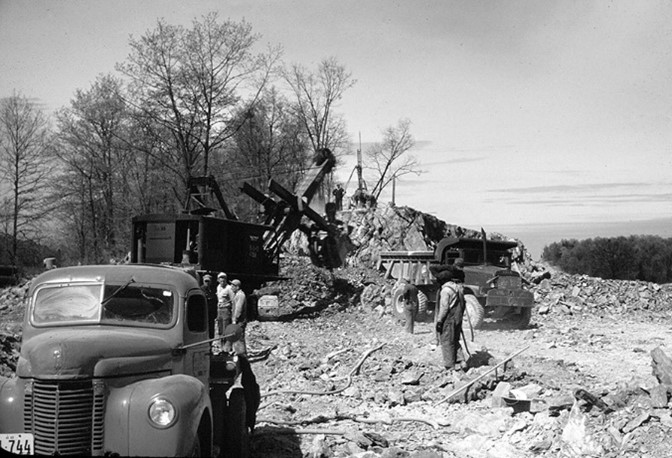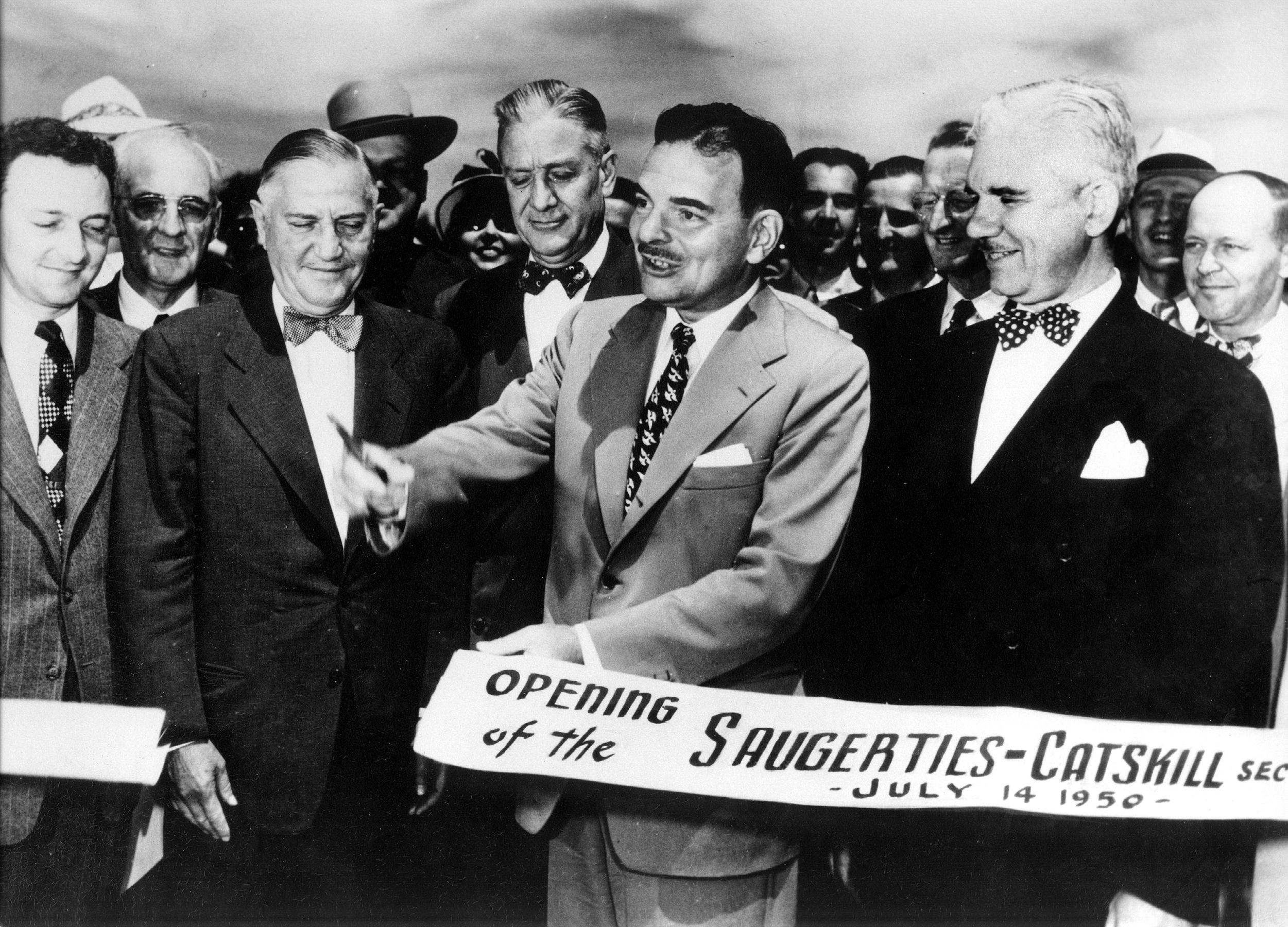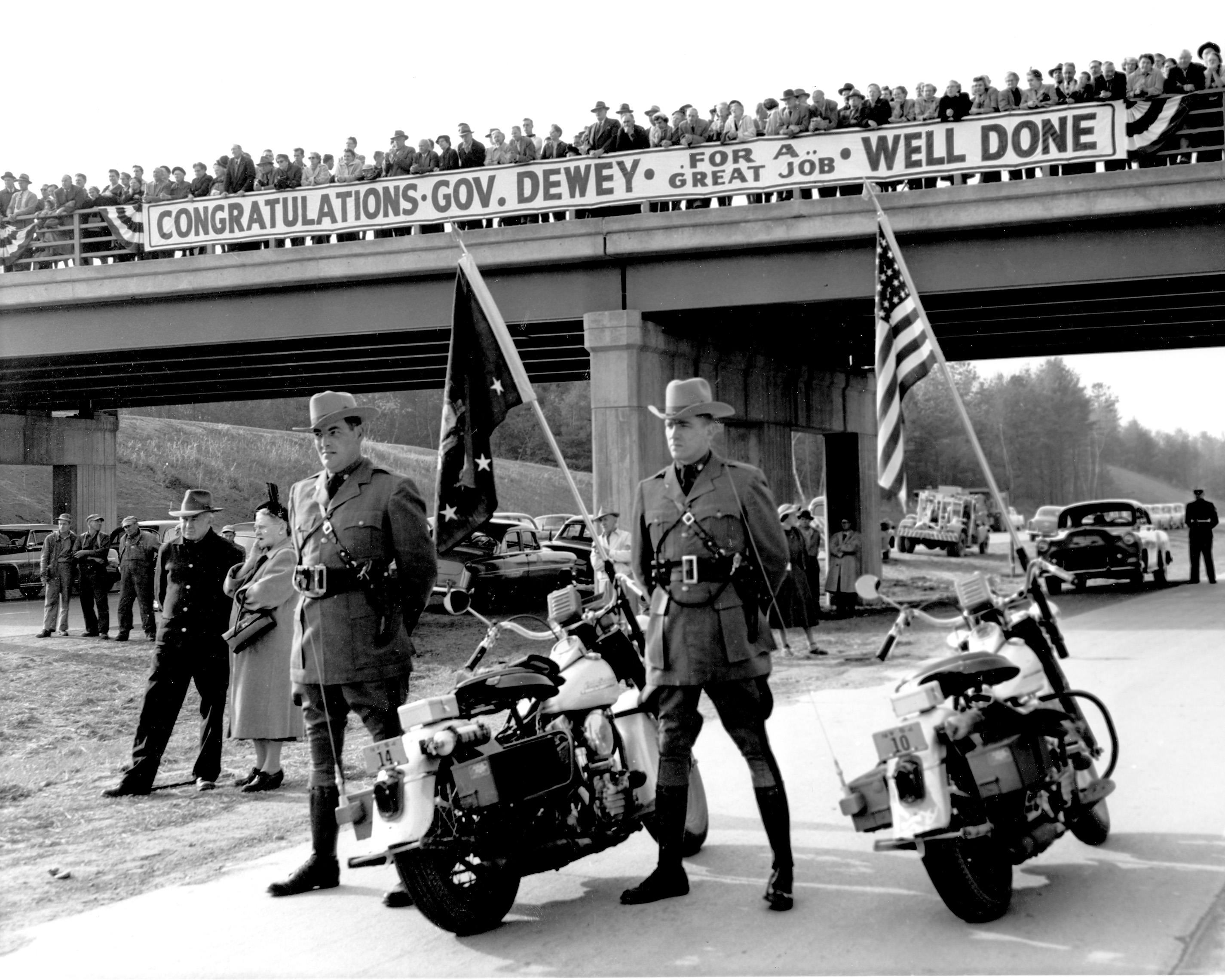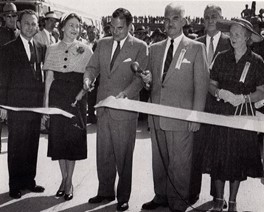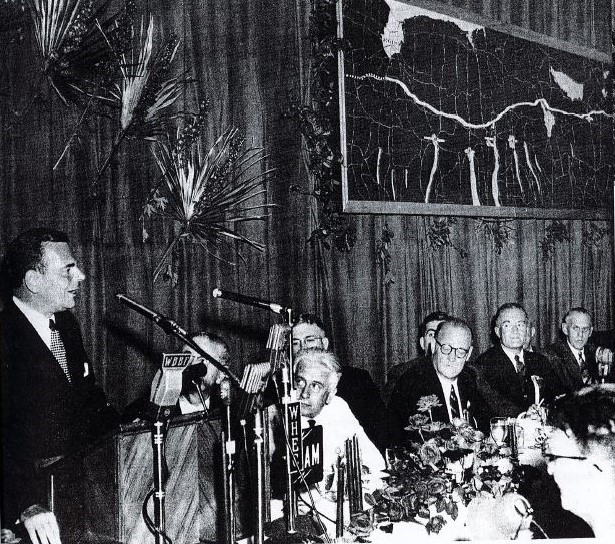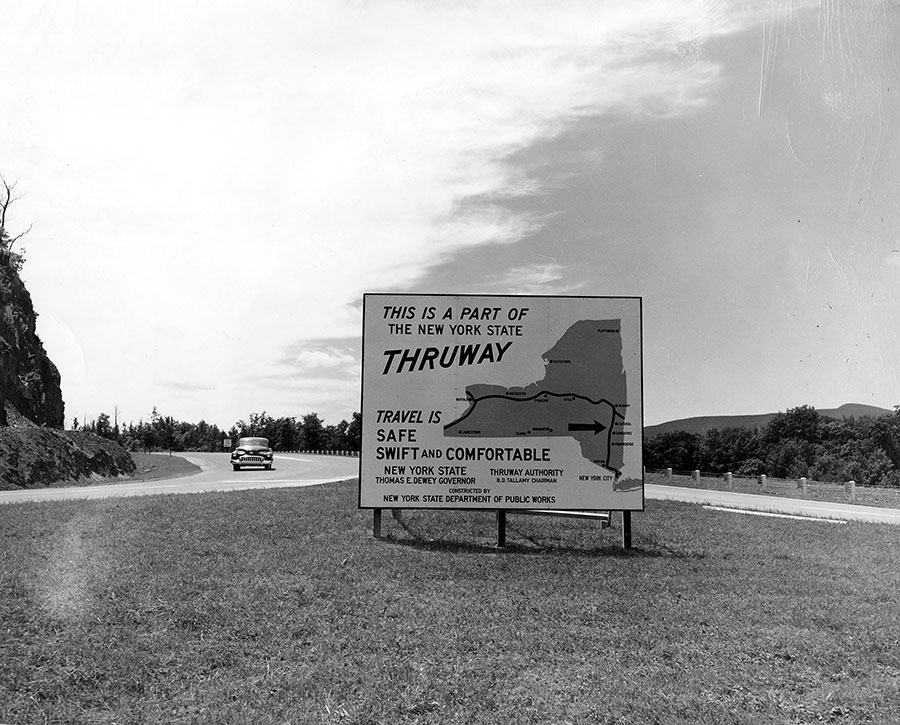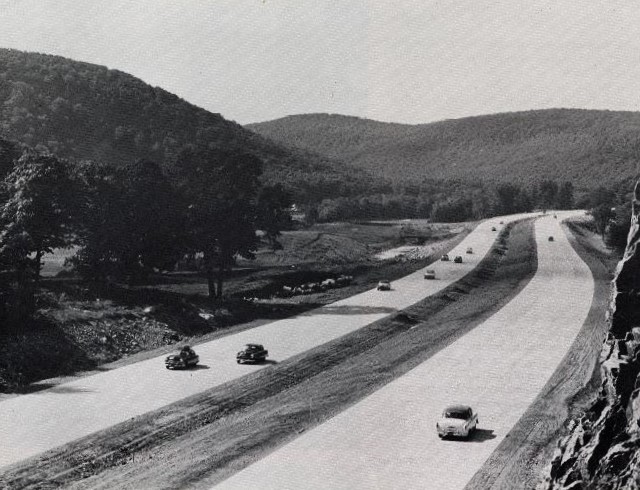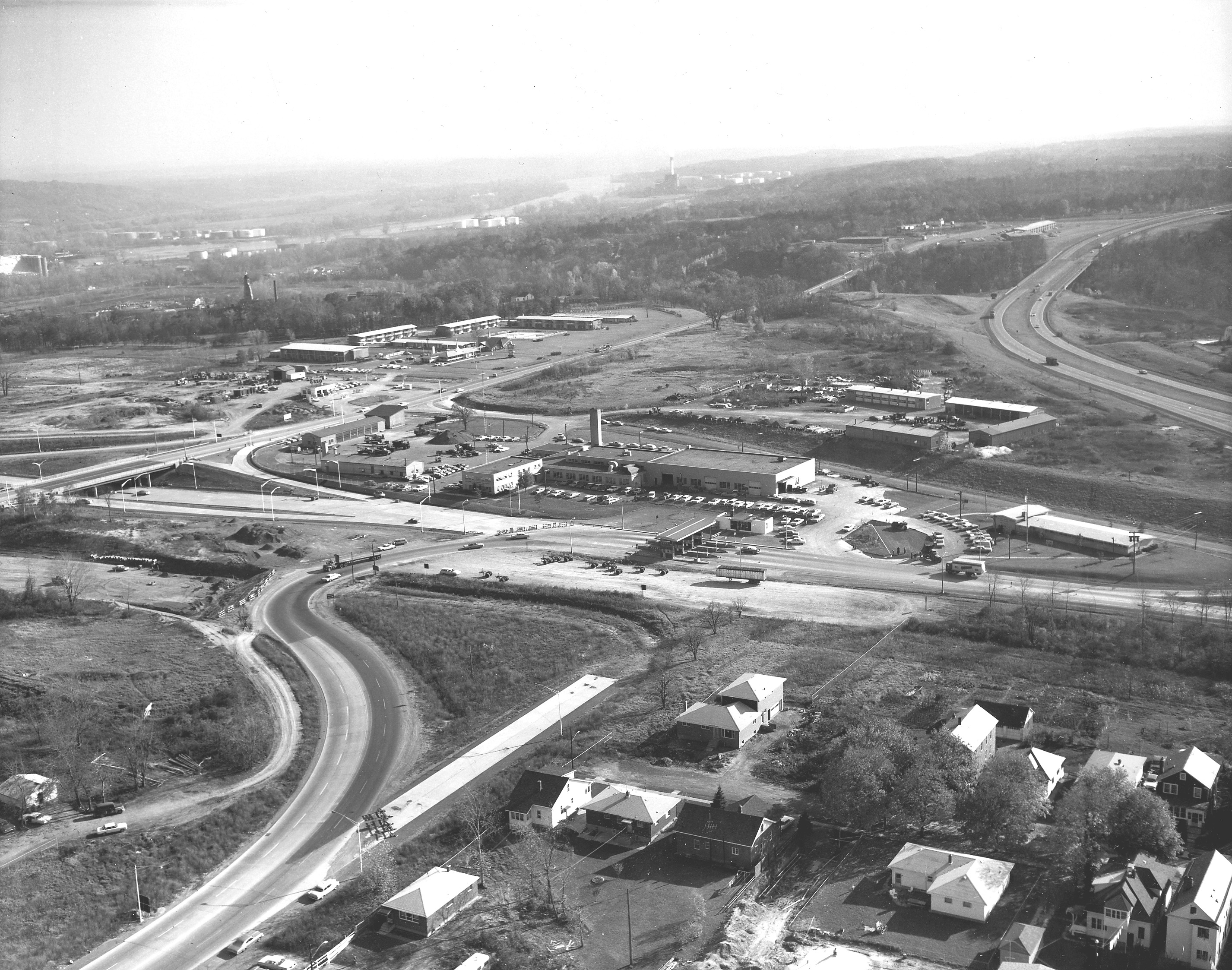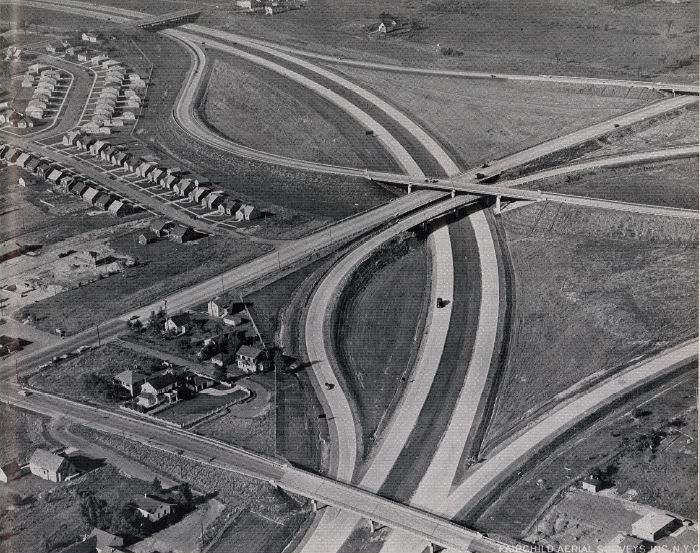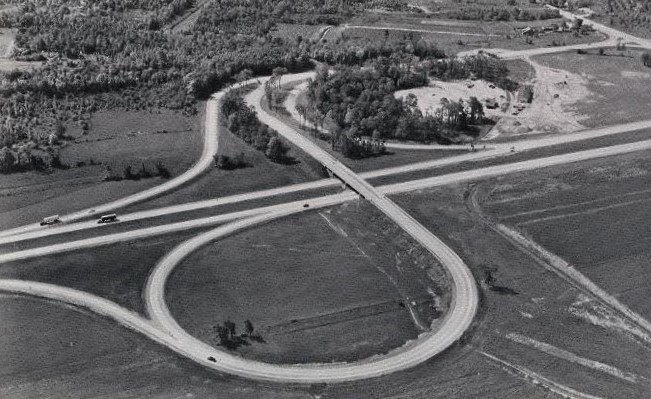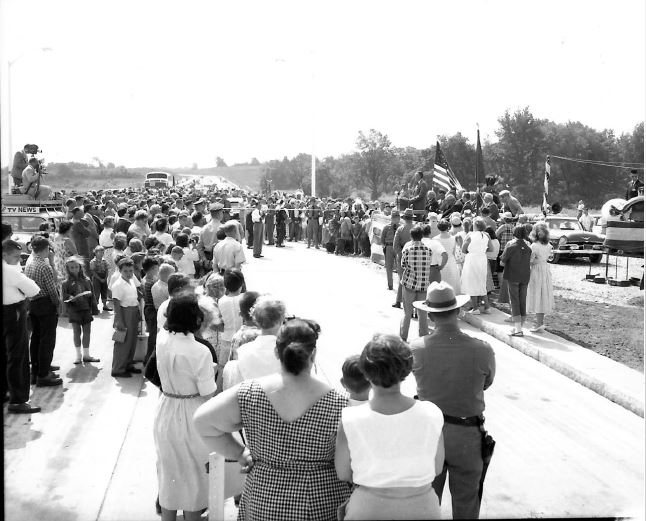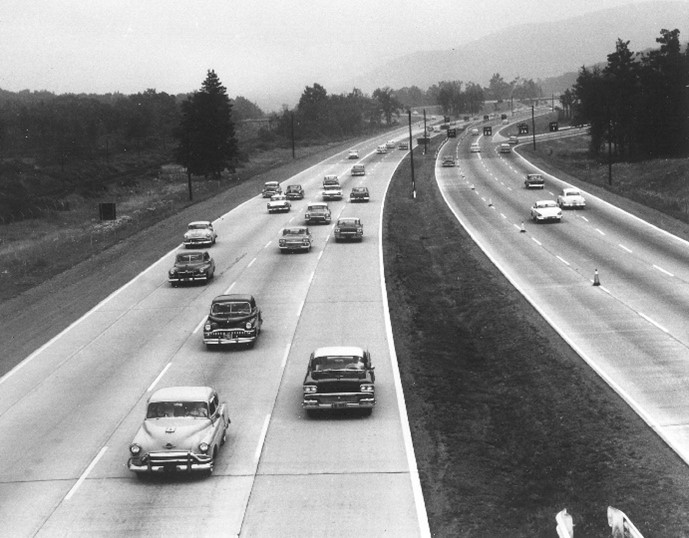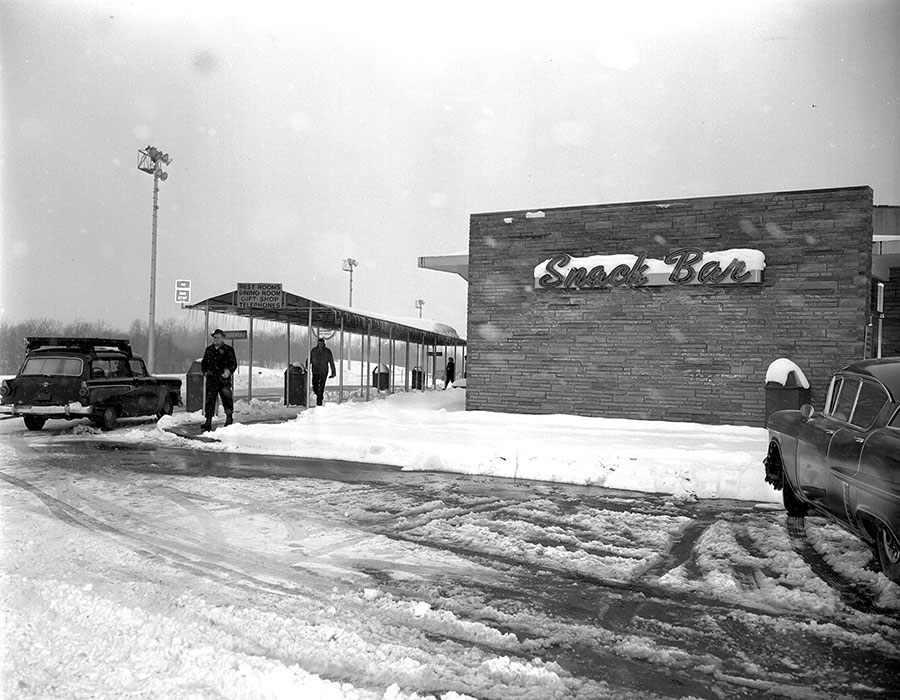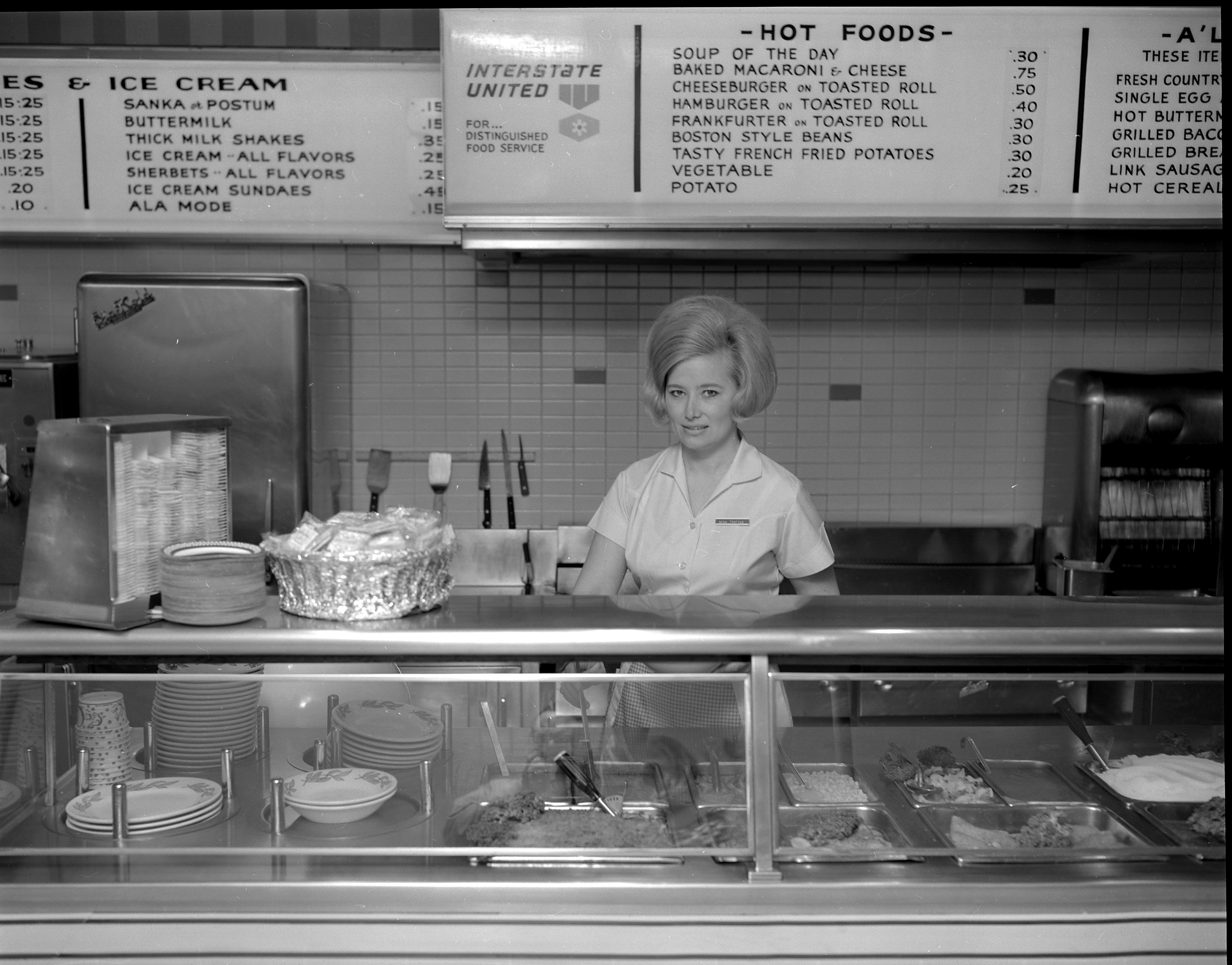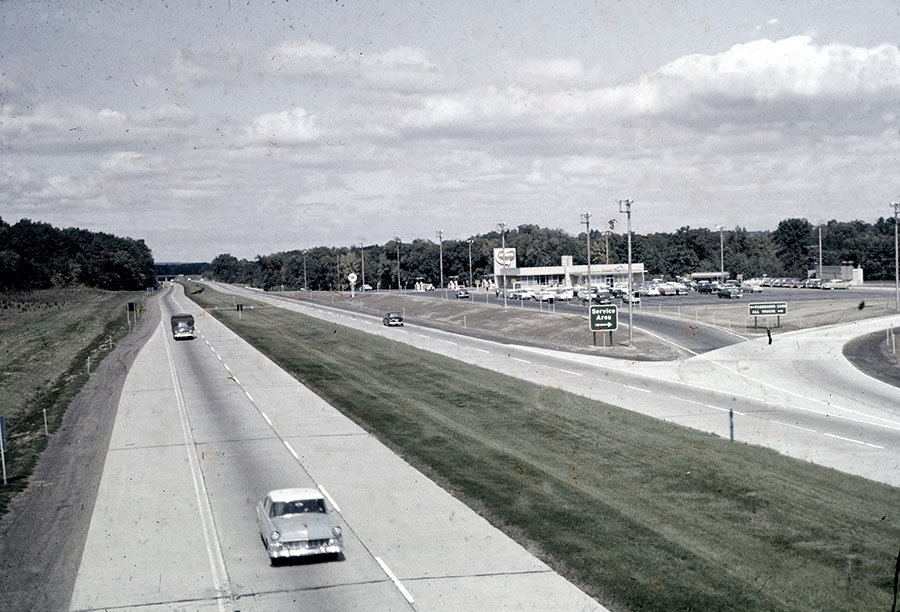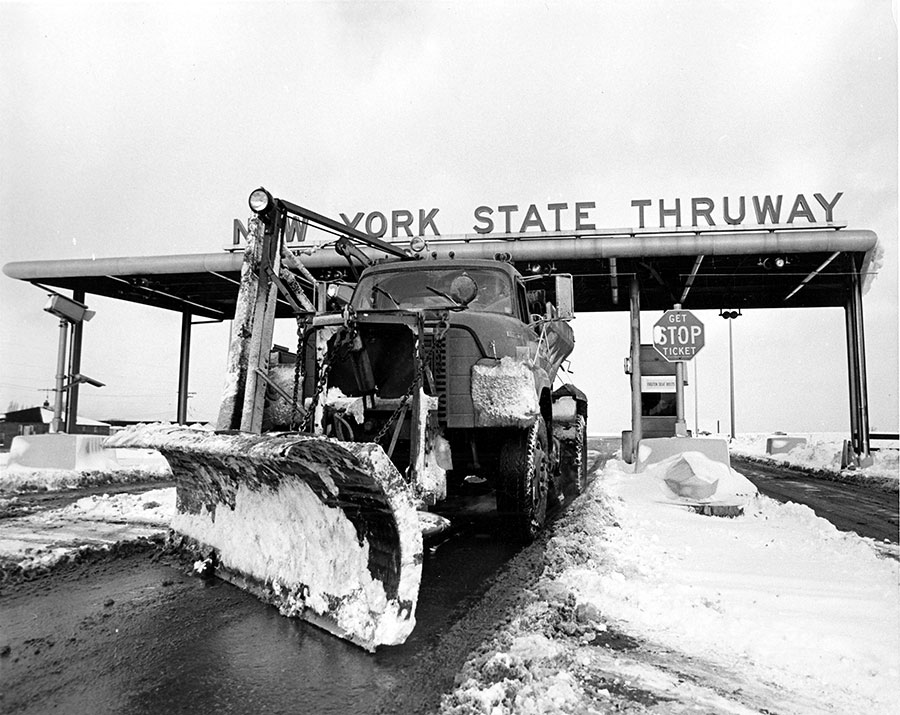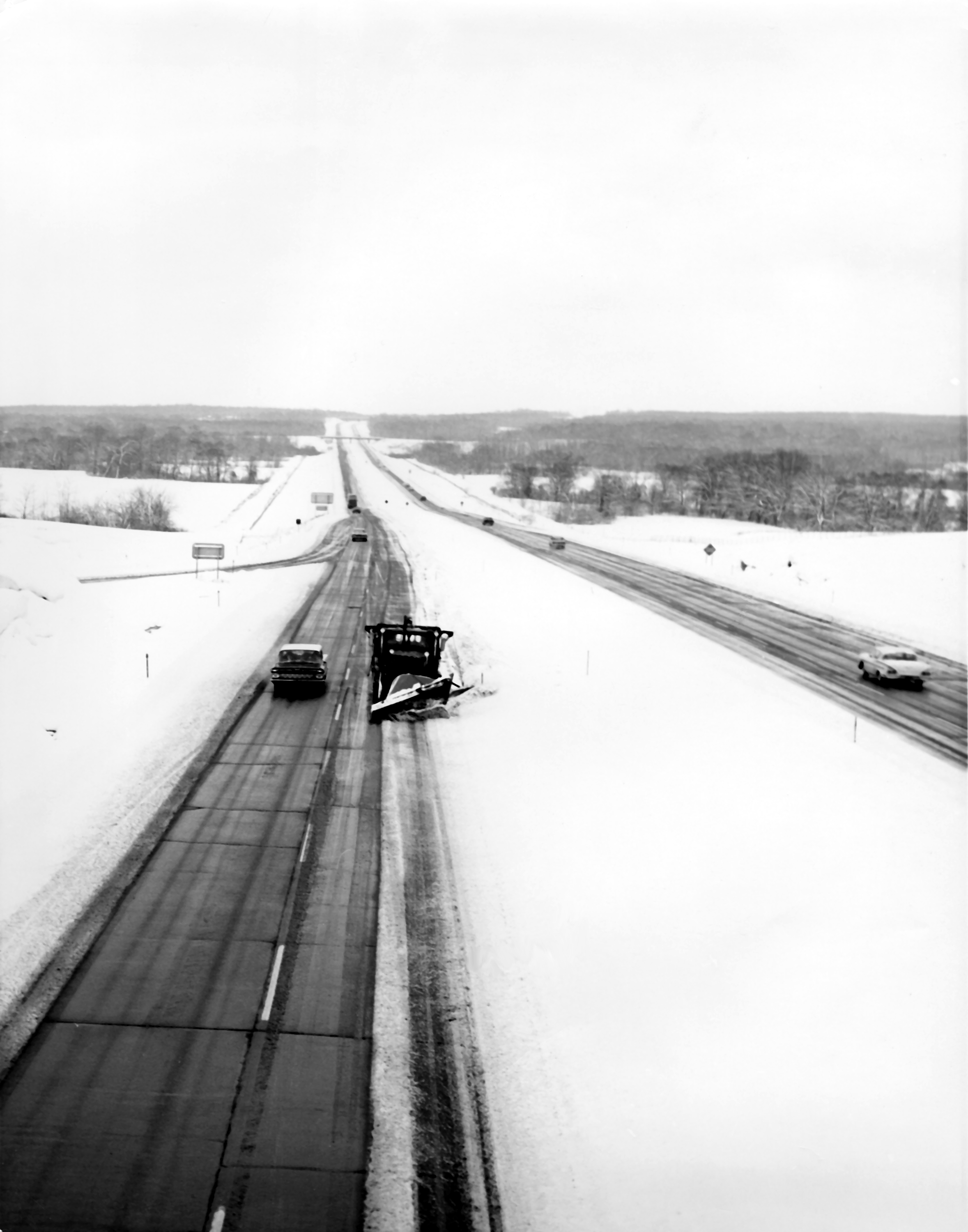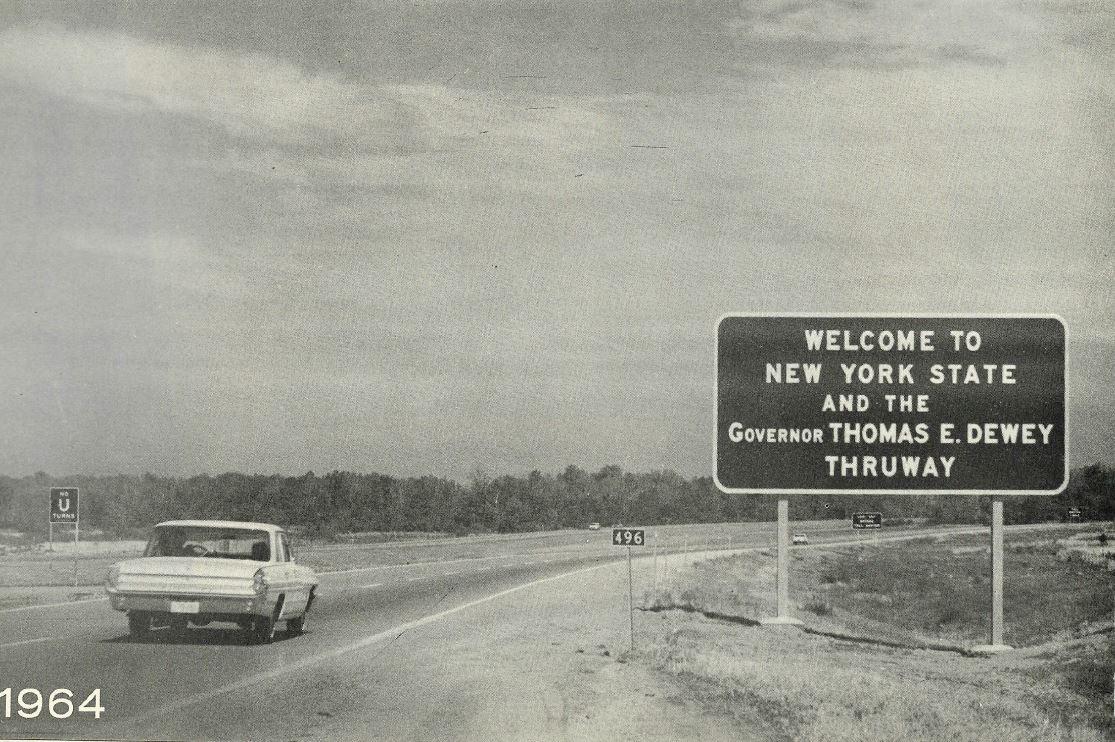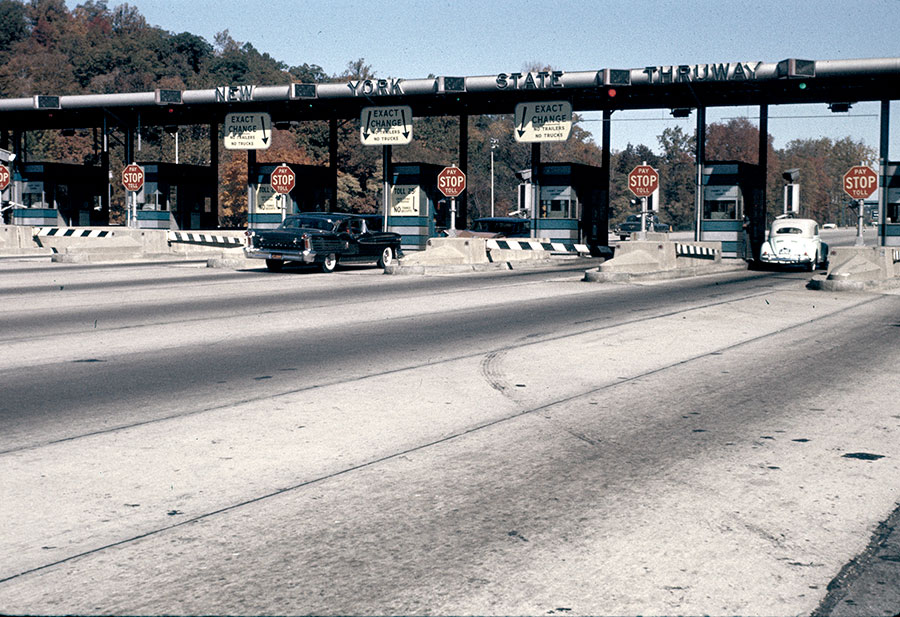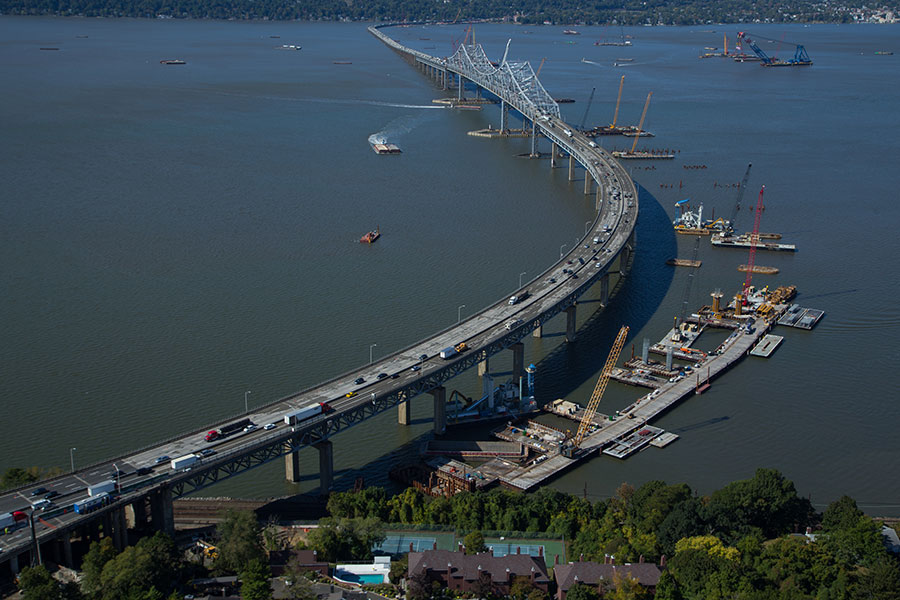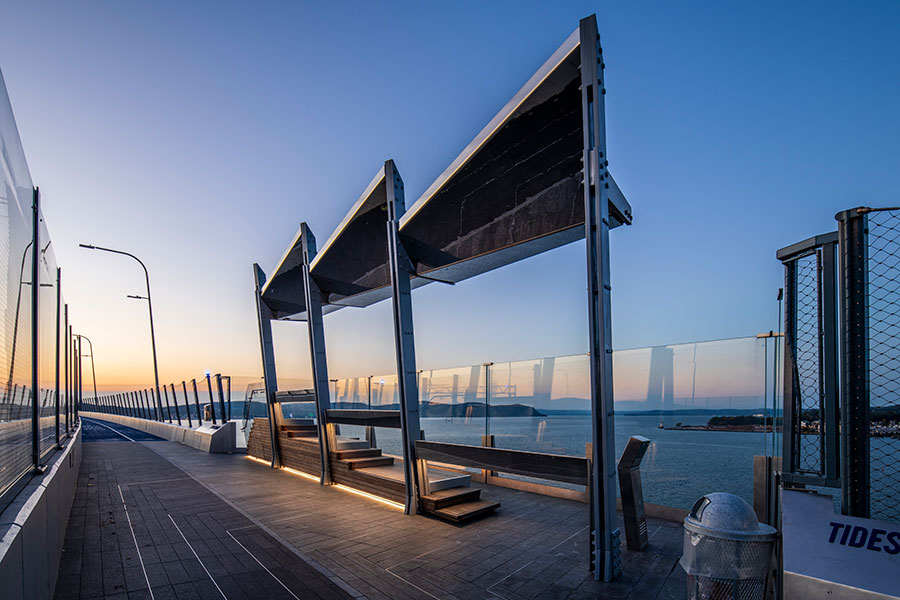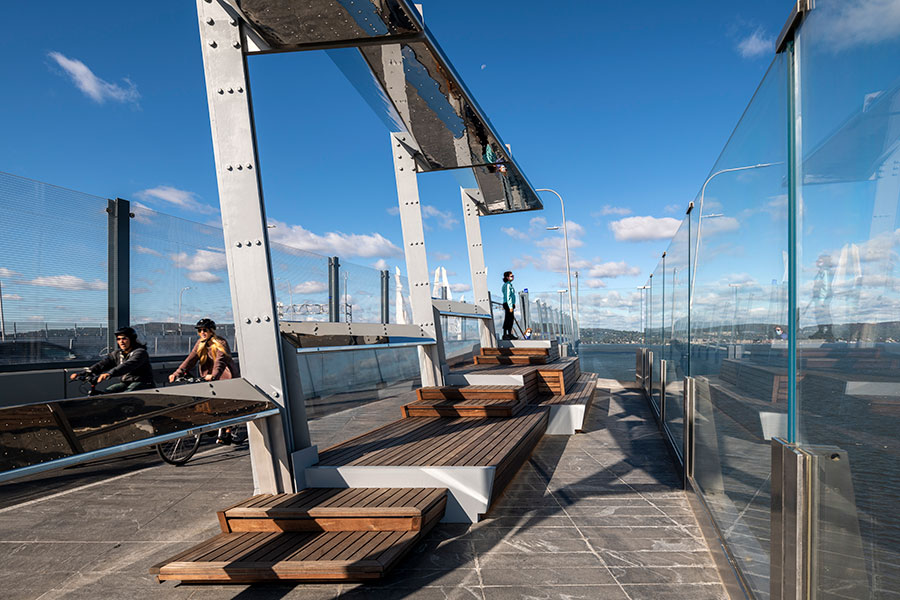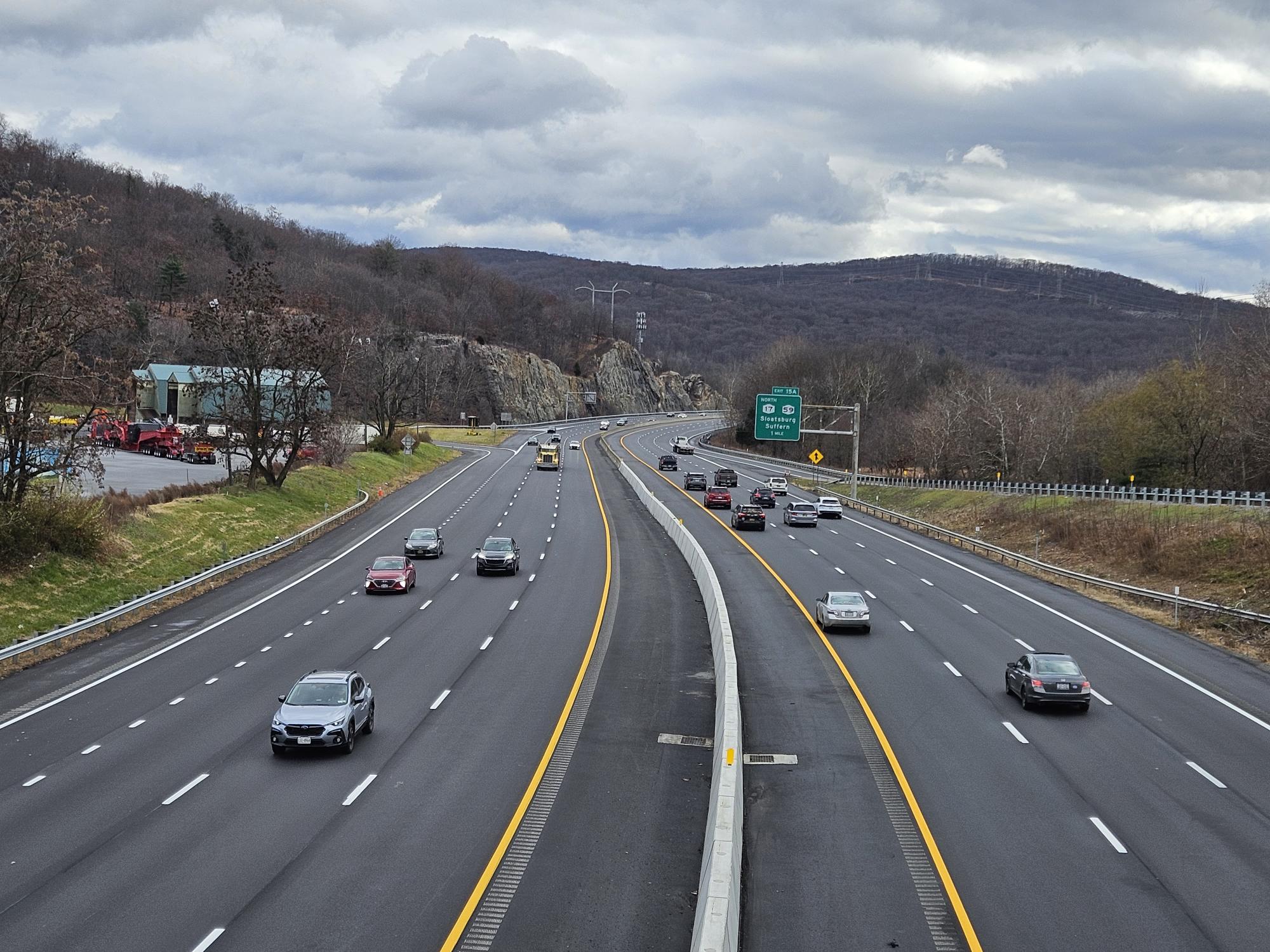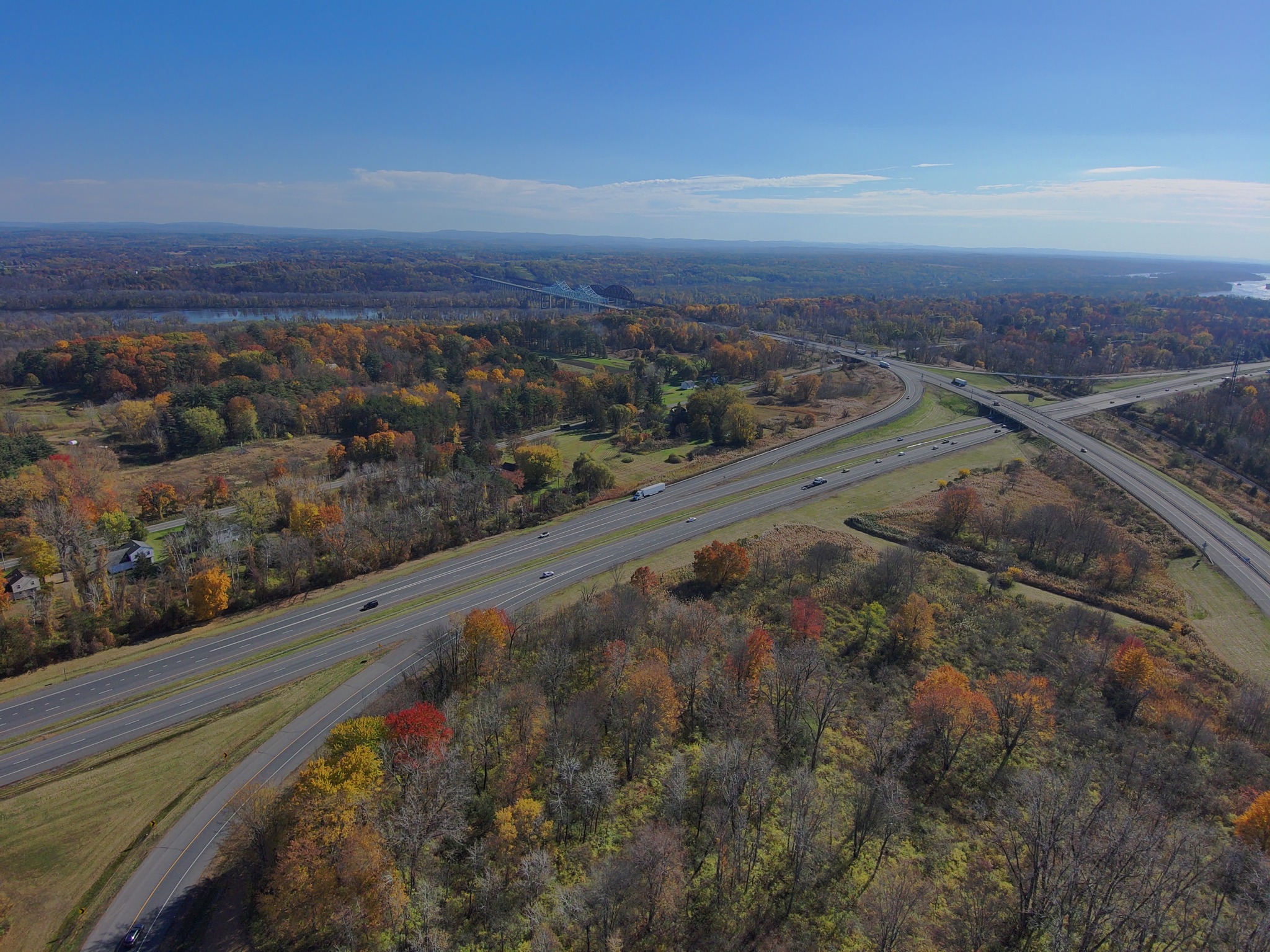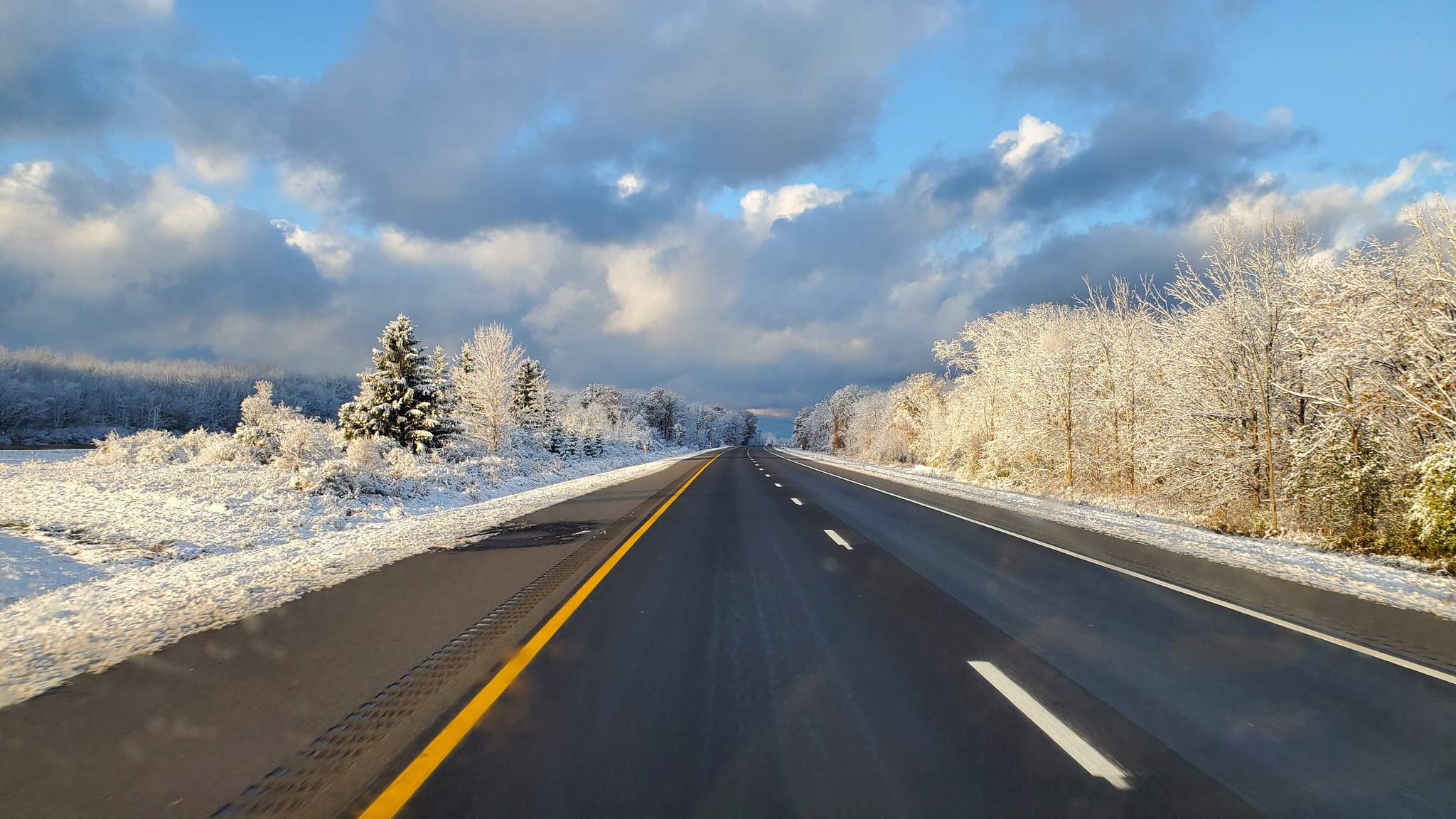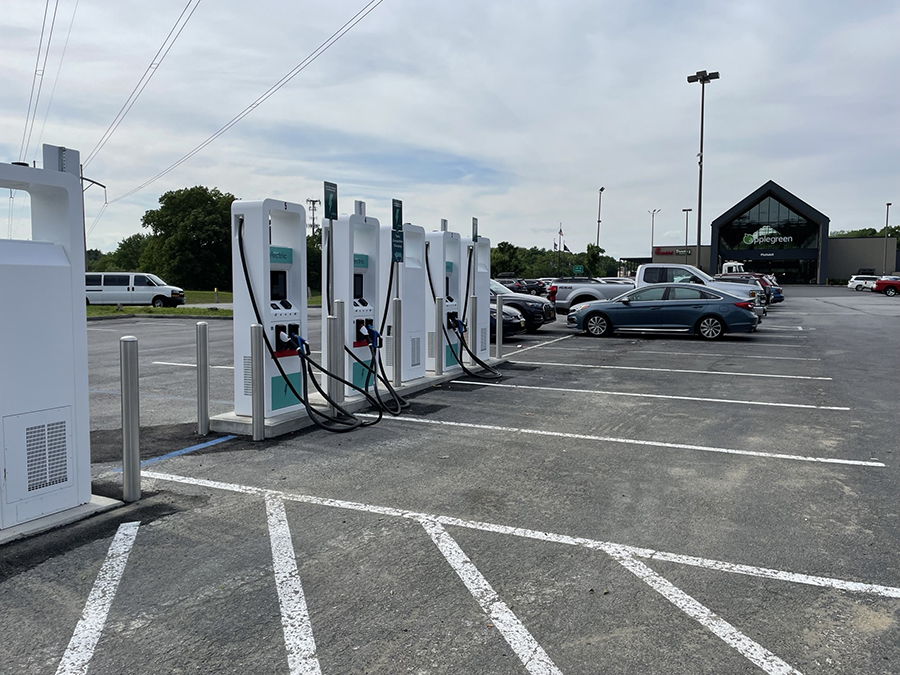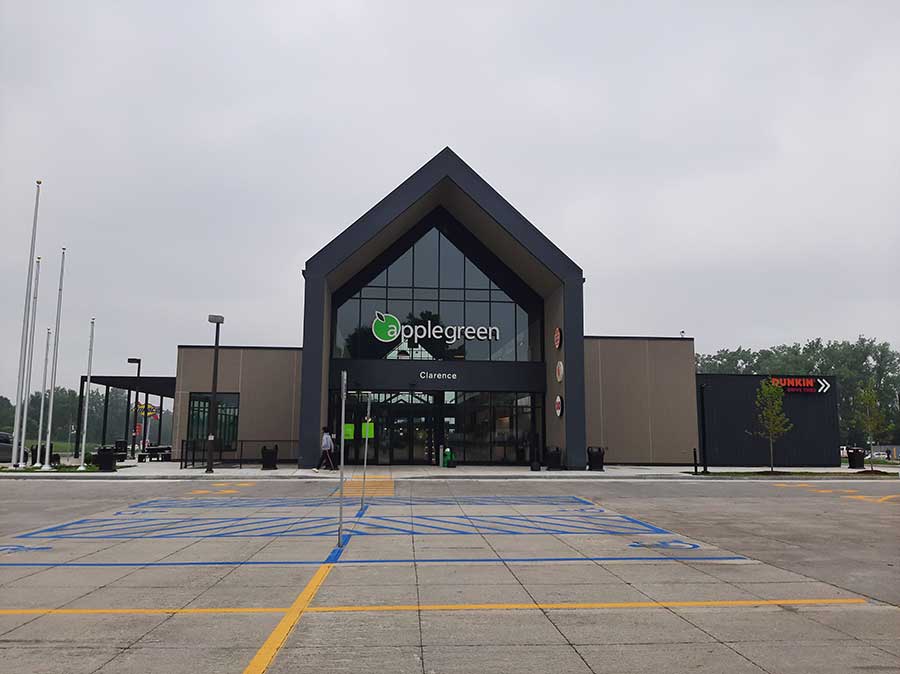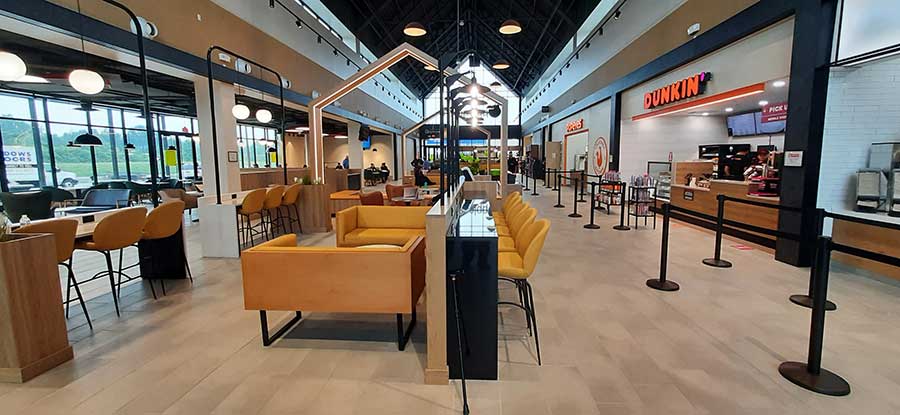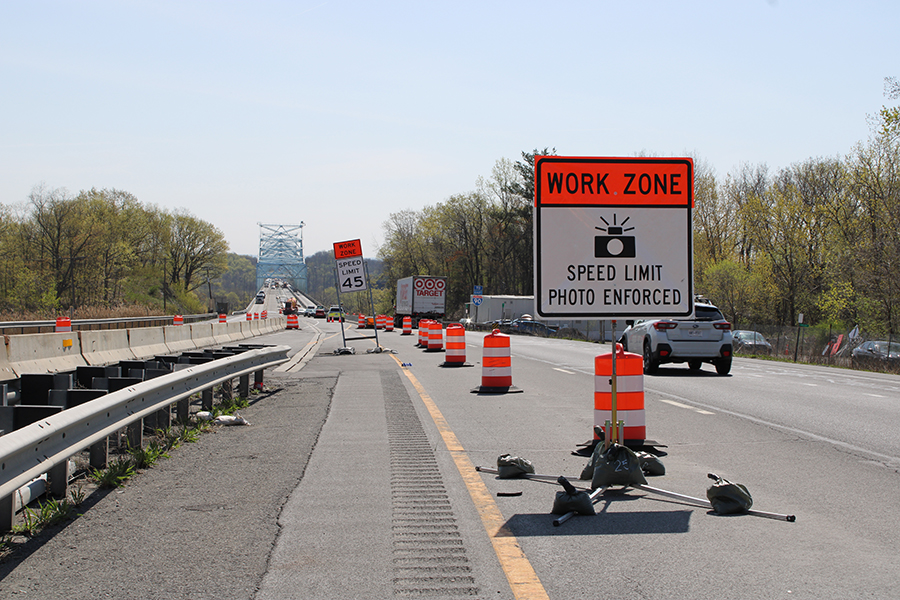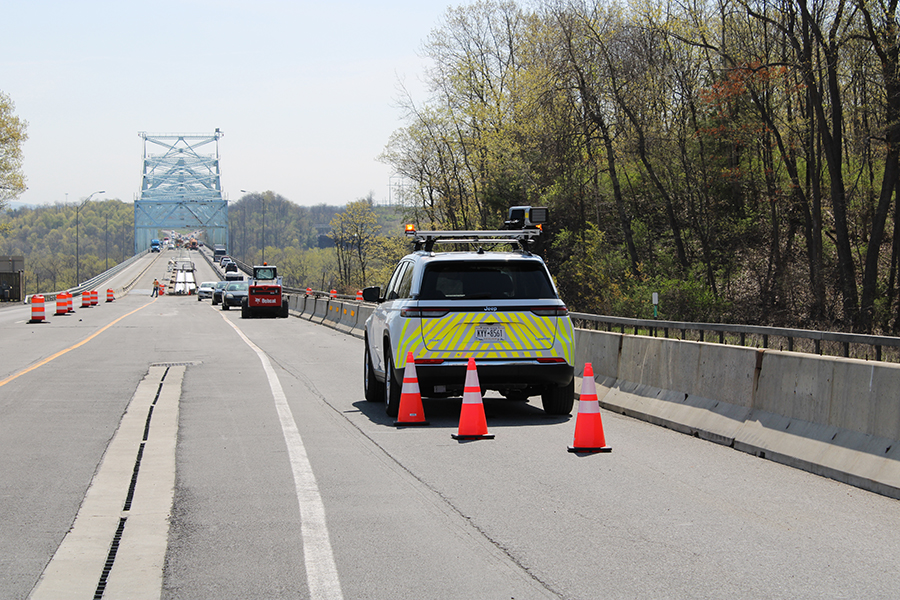History of the NYS Thruway
In 2024, the Thruway Authority celebrates 70 years of service in New York State. On June 24, 1954, the first toll section of the Thruway opened, a 115-mile stretch of I-90 between Rochester and Lowell.
The second major opening on the system was August 26, 1954, when the section of the Thruway from Rochester to Buffalo opened, followed by the stretch from Utica to Newburgh on October 26, and the 15-mile section from Newburgh to Harriman on December 22.
During its first year of operation, there were a total of 8,700,000 trips made by motorists with mileage totaling 522,000,000.
In the years following, additional sections of the Thruway opened to traffic. In December 1957, the final 29-mile link in the Erie Section was opened to traffic, extending from the Silver Creek interchange to join the Thruway’s mainline in Buffalo. This established an unbroken Thruway route of 496 miles from New York City to the Pennsylvania state line and made the Thruway the longest toll highway in the world. The Thruway eventually expanded to its current 570-miles of roadway in 1991.
From 1951, when the first toll collector was hired to work at the Grand Island Bridge toll booth, through 2020, more than 12,000 men and women served as toll collectors on the Thruway. Offering a friendly smile and greeting, toll collectors were the face customers saw when entering the Thruway, and the last as they finished their journey on the system. They provided customers not only with a toll ticket and change for their tolls, but directions, local recommendations, answers to questions and other assistance.
Timeline
1940s 1950s 1960s 1970s 1980s 1990s 2000s 2010s 2020s
-
1940s
-
1950s
JOINING THE TEAM
In May 1953, a Civil Service exam was held to establish a list of candidates for positions as Thruway toll collectors. One hundred and forty toll collectors, including four women, were hired and reported for a two-week training course in Syracuse in June 1954.
After the training course, the toll collectors and supervisors were assigned to the toll stations between Lowell and Rochester, the first portion of the Thruway that was to open.
The recruitment, training and selection process continued for approximately 30 toll collectors for the opening on August 26 of the Rochester-Buffalo section, and again prior to October 26 for approximately 180 toll collectors for assignment to the Newburgh-Utica section.
Male toll collectors wore blue uniforms and numbered badges, with caps, short jackets and trousers. Women wore caps, blouse-style jackets and skirts, and numbered badges.
-
1954 - THE GRAND OPENING
On June 24, 1954, the first toll section of the Thruway opened, a 115-mile stretch of I-90 between Rochester and Lowell.
During the ceremonies that morning, Governor Thomas E. Dewey attended ribbon cuttings and celebrations along the route to Rochester at Exit 46.
At 13 toll booths along the route, cars were lined up for hours to be the first on the Thruway.
At 10 p.m. that night, in the Powers hotel in Rochester, Governor Dewey pushed a button and buzzers sounded at every toll booth between West Henrietta and Lowell. Every toll collector heard the Governor’s voice via Thruway communications, as he proclaimed the road open to traffic. Minutes later, the first Thruway tolls were collected.Toll supervisor Jim Murphy was given the first toll by a motorist at 10:01pm.
-
1955
During its first year of operation, there were a total of 8,700,000 trips made by motorists with mileage totaling 522,000,000.
Toll collection staff continued to increase yearly to accommodate the heavy traffic and newly opened sections of the Thruway.
-
VITAL ROLES
The first toll collector was hired in December 1951 for the Grand Island Bridge toll booth. From 1951-2020, more than 12,000 men and women served with the Thruway Authority.
Along with cash collection, toll collectors were recognized for other vital roles on the job.
Motorists inquired about directions, weather conditions or traffic incidents, all of which the toll collectors stayed informed about to pass along information to travelers.
During the 66 years of toll collection, toll collectors also assisted New York State Police Troop T in reporting suspicious vehicles, identifying wanted individuals or vehicles, reporting disabled vehicles, and contacting emergency services.
-
TAPPAN ZEE BRIDGE
In December 1951, the Authority identifies a crossing site between South Nyack and Tarrytown, prompting public protest amid concern the bridge would negatively impact the riverfront communities.
In 1952, although delayed due to steel shortages during the Korean War, construction begins on the new bridge.
-
THE GRAND OPENING
On December 15, 1955, Governor Averell Harriman is joined by legendary actress and Rockland County resident Helen Hayes and the mayors of Nyack, South Nyack, Suffern, and Tarrytown for the opening of the Tappan Zee Bridge. The bridge carries Interstate 87/287 across the river, virtually completing the Buffalo-to-Bronx mainline. At 3.1 miles long, the Tappan Zee is the longest bridge in New York. The toll to travel over the Tappan Zee Bridge in 1955 was 50 cents.
-
1957-1958
On December 14, 1957, the final 29-mile link in the Erie Section was opened to traffic, extending from the Silver Creek Interchange to join the Thruway’s Mainline in Buffalo. This established an unbroken Thruway route of 496 miles from New York City to the Pennsylvania state line and made the Thruway the longest toll highway in the world. Total Thruway mileage in operation was increased to 506 miles.
Automatic toll collection equipment, or exact change coin drops, were installed at the Yonkers toll barrier in 1957, and in 1958 were installed at the New Rochelle toll barrier and additional locations in the Buffalo area. Instead of a toll collector, a machine with a hopper was located at the toll booth. Motorists with exact change of the toll deposited the coins hopper and then proceeded through when the light turned green. Exact change coin drops were eventually added to the additional fixed toll barriers on the Thruway.
-
1960s
-
1964
On September 1, 1964, a legislative act took effect naming the Thruway “The Governor Thomas E. Dewey Thruway,” paying tribute to the former Governor’s leadership in creating the superhighway. Signs welcoming motorists to the Dewey Thruway were erected at eight major entrances to the Thruway.
-
1965
In 1965, the uniforms worn by toll collectors were updated. Women toll collectors were issued a completely redesigned uniform, and men’s jackets were replaced by a coat. Neckties, belts and tie claps were also issued to men.
In 1968, women toll collectors were approved to wear uniform slacks.
-
1970s
At the start of the new decade, vehicles driving the Thruway exceeded four billion miles for the first time. Vehicles traveled 4,028,455,119 miles in 1970. Traffic continued to set records in the following years.
To relieve congestion at the Tappan Zee Bridge, the Thruway Authority removed the westbound tollbooths in 1970 and began collecting round-trip tolls in the eastbound direction. The toll on the Tappan Zee Bridge was 50 cents each way, and was changed to one dollar eastbound only.
-
1980s
1984
In 1984, miles traveled on the Thruway surpassed the landmark of 100 billion.
Four additional toll lanes were constructed at the New Rochelle Toll Barrier, the busiest on the system, to provide better service for motorists during peak travel times.
-
1990s
-
NEW TECHNOLOGY
In 1993, the Thruway Authority began implementing new technology at the toll plazas, with the introduction of E-ZPass. E-ZPass was first installed at the fixed toll barriers in the Hudson Valley and the Tappan Zee Bridge, the Grand Island Bridges and by 1997 was fully operationally on the entire Thruway system.
For the first time in the history of the Thruway, the toll ticket was updated to be printed on-demand and customized for the vehicle to which it is issued.
-
2000s
NEW ERA
The 2000s began with a new era of technology for travelers on the Thruway, with dedicated E-ZPass lanes at Thruway toll plazas, the creation of the Thruway Authority’s website, and new methods to receive traffic information such as the Thruway Highway Advisory Radio and TRANSalerts, and conveniences such as free Wi-Fi at the 27 service areas. Closed Circuit Television System (CCTV) images were also made available for real-time traffic reporting programs.
From 2001-2003, the exact change coin drops located at the fixed toll barriers were all removed and converted to E-ZPass lanes.
In 2010, 1,430 toll collectors were on staff.
-
2010s
-
MOVING FORWARD
The 2018 State of the State address announced that cashless tolling would be implemented on the Thruway system-wide by the end of 2020.
In March, cashless tolling is operational at the Grand Island Bridges in Western New York, ending cash collection at toll booths.
-
2020s-Today
2020
In November 2020, cash toll collection ends, with the implementation of cashless tolling system-wide. Fifty-nine gantries are located over the main highway, at entrance/exit ramps and fixed toll barriers.
On June 15, the 3.6-mile path on the Gov. Mario M. Cuomo Bridge opens to bicyclists and pedestrians. The shared use path is one of the longest of its kind in the nation.
-
THE FUTURE
Since the implementation of cashless tolling in 2020, more than 1.3 billion transactions have been successfully processed on the Thruway.
In 2023, motorists took more than 396.9 million trips and drove 8.1 billion miles on the Thruway.
Today and in the future, the Thruway Authority continues to modernize the transportation system by investing in infrastructure projects, expanding Electric Vehicle Chargers to create a robust, end-to-end corridor of fast charging locations system-wide, upgrading the 27 service areas on the system, utilizing innovative technologies, and enhancing safety.
Our System
Capital Program
Projects Map


